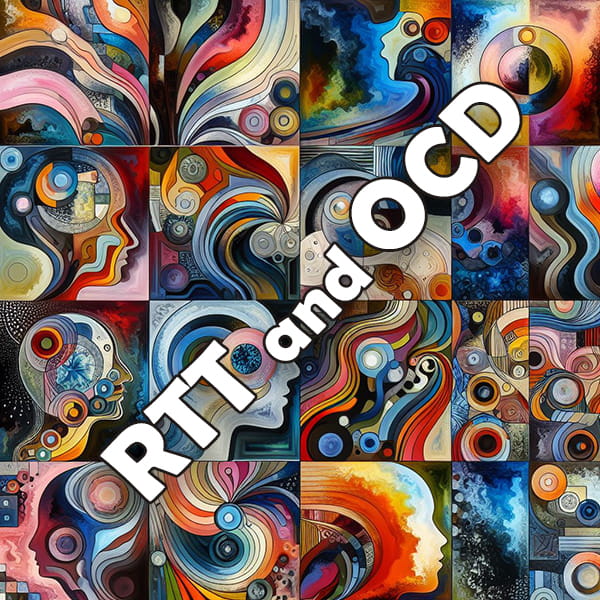By: Dr Carla Kesrouani
Categories:
RTT and OCD
In order to understand the relationship between RTT and OCD, we must first learn about each of them. Thus we find the logical connection between RTT and OCD. And what is it that makes the terms RTT and OCD always go together? To begin with, let’s leave RTT and start learning about OCD:
What is OCD?

OCD is: Obsessive-Compulsive Disorder.
Obsessive-compulsive disorder (OCD) is a mental health condition that affects millions of people worldwide. People with OCD experience intrusive and unwanted thoughts, images, or impulses (obsessions) that cause them anxiety or distress. They also engage in repetitive behaviors or mental acts (compulsions) to try to reduce or neutralize the anxiety caused by the obsessions.
OCD can interfere with a person’s daily functioning, relationships, and quality of life. It can cause significant distress and impairment, and often leads to feelings of shame, guilt, and isolation. People with OCD may spend hours a day performing compulsions, avoiding certain situations or triggers, or seeking reassurance from others.
Traditional treatments
Traditional treatments for OCD include medication and cognitive-behavioral therapy (CBT), which is a form of psychotherapy that aims to help people identify and challenge their irrational thoughts and beliefs, and gradually expose themselves to their feared stimuli while resisting the urge to perform compulsions. However, these treatments are not always effective, accessible, or affordable for everyone. Some people may not respond well to medication or CBT, or may experience side effects or relapses. Others may face barriers such as long waiting lists, high costs, or lack of availability of qualified therapists.
What is RTT?

RTT is: Rapid Transformational Therapy.
Rapid Transformational Therapy (RTT) is a new and innovative approach to treating OCD and other mental health conditions. RTT is a form of hypnotherapy that combines elements of hypnosis, neuro-linguistic programming (NLP), cognitive-behavioral therapy (CBT), and psychotherapy. RTT aims to help people access and reprogram their subconscious mind, which is where the root cause of their emotional and behavioral issues lies.
RTT is different from other forms of therapy because it can produce rapid and lasting results in as little as one or two sessions. RTT does not require long-term commitment or ongoing maintenance. RTT is also tailored to each individual’s needs and goals, and can address multiple issues at once. RTT can help people overcome not only their OCD symptoms, but also any other challenges or limitations that may be holding them back from living their best life.
RTT approach and technique
RTT works by helping people uncover the underlying beliefs and emotions that are driving their obsessions and compulsions, and then replacing them with positive and empowering ones. RTT also helps people release any trauma, pain, or negative experiences that may have contributed to their OCD. By doing so, RTT can help people break free from the cycle of OCD and create lasting changes in their thoughts, feelings, and behaviors.
The relationship between RTT and OCD

The relationship between RTT and OCD is that RTT is the best treatment method for OCD. So if you are struggling with OCD and are looking for a fast and effective way to overcome it, RTT is the solution for you. RTT can help you understand the root cause of your OCD, transform your subconscious beliefs and emotions, and create positive changes in your life. RTT can help you regain control over your mind and body, and free yourself from the grip of OCD.
This relationship between RTT and OCD is so strong that the terms RTT and OCD are always associated And the terms RTT and OCD are mentioned together. This is due to the excellence of RTT in treating OCD.
RTT online

You can experience RTT online from the comfort of your own home. All you need is a computer or a smartphone with a stable internet connection and a headset. You will be guided by a certified RTT therapist who will tailor the session to your specific needs and goals. You will be able to communicate with your therapist throughout the session and ask any questions you may have.
RTT online is just as effective as RTT in person. In fact, some people find it even more comfortable and convenient to do RTT online, as they can choose a time and place that suits them best. RTT online can also save you time and money on travel and accommodation costs.
You can contacting Dr. Carla Kesrouani on WhatsApp and arranging for RTT sessions.

